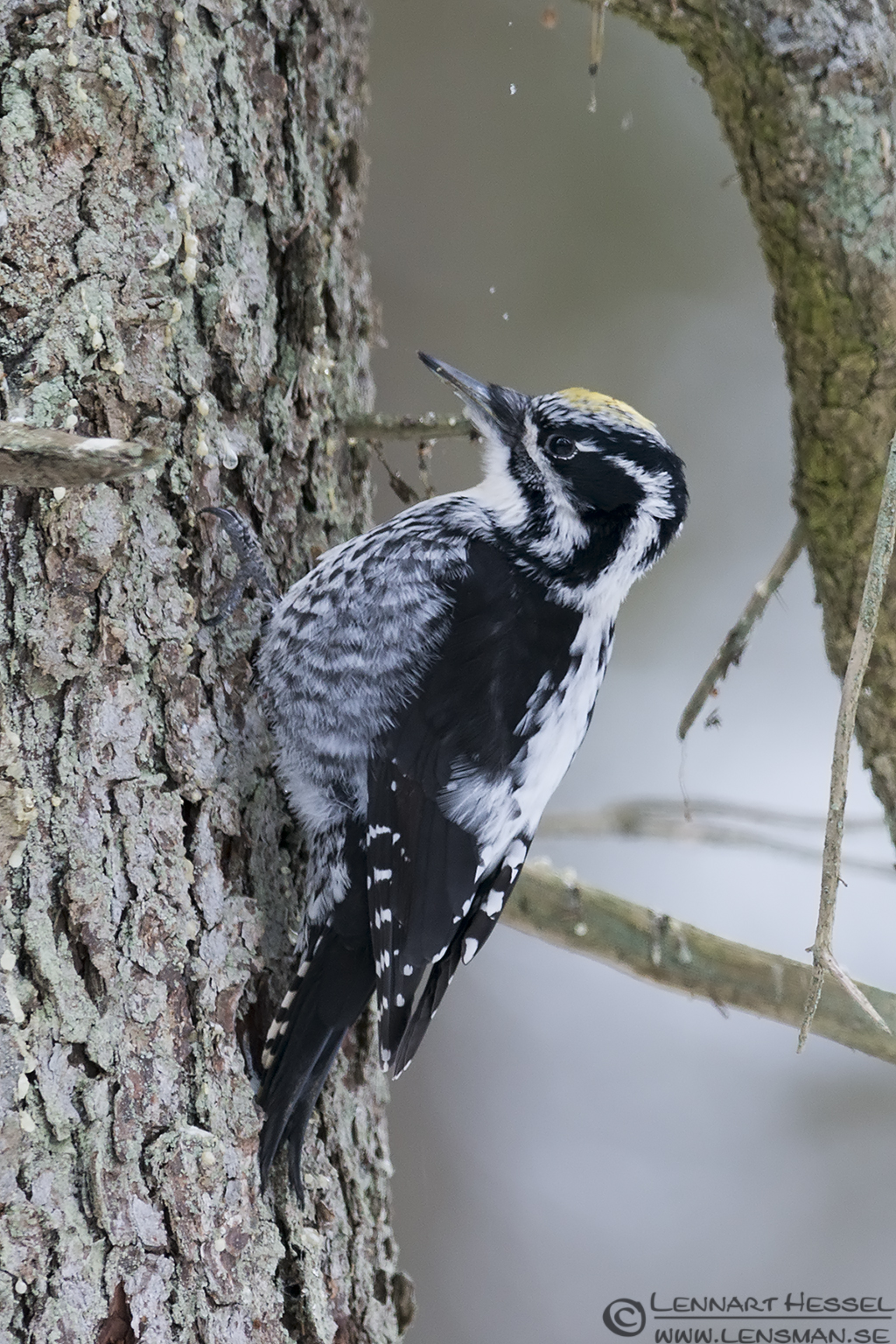
Picoides tridactylus
SUBFAMILY
Picinae
TAXONOMY
Picus tridactylus Linnaeus, 1758, Sweden. Although North
American and Eurasian populations appear similar, recent studies
suggest significant genetic differences. Three races are recognized
in the New World, five in Eurasia.
OTHER COMMON NAMES
English: Northern three-toed woodpecker; French: Pic tridactyl;
German: Dreizehenspecht; Spanish: Pico Tridбctilo.
PHYSICAL CHARACTERISTICS
8–9.5 in (20–24 cm); 1.6–2.7 oz (46–76 g) a medium-sized
woodpecker with black above, white below, varying extent of
barring on flanks and white on back; male has a yellow forehead
and crown, female has a whitish crown with fine black
streaks; immature has duller plumage that is somewhat brown;
only three toes on each foot.
DISTRIBUTION
Resident from near the tree line in northern Alaska, northern
Canada, northern Eurasia, south to northern tier of United
States, mountains of southern Europe, western China, northern
Mongolia, northern Korea, and Japan. Wanders south in
winter to New England, north central United States. P. t. tridactylus,
northern Eurasia, Scandinavia, Latvia, to Mongolia,
southeastern Siberia, and Sakhalin Island; P. t. crissoleucus,
northern taiga from Urals to Sea of Okhotsk; P. t. albidor,
Kamchatka; P. t. alpinus, mountains of central, southern, and
southeastern Europe, northeastern Korea, Hokkaido, Japan;
P. t. funebris, southwestern China to Tibet; P. t. dorsalis, Rocky
Mountains, Montana to Arizona and New Mexico; P. t. fasciatus,
western North America, Alaska, and Yukon south to
Oregon; P. t. bacatus, eastern North America, Alberta east to
Labrador and Newfoundland, south to Minnesota and New
York.
HABITAT
Coniferous forest; less often mixed coniferous-deciduous forest.
BEHAVIOR
Nonmigratory, often very quiet; very arboreal; populations respond
to forest insect outbreaks.
FEEDING ECOLOGY AND DIET
Feeds primarily on wood-boring insects, their larvae and pupae;
forages lower in winter than at other times; when sexes
forage together, females forage higher than males.
REPRODUCTIVE BIOLOGY
Monogamous; breeding activities generally extend from mid-
March through June; nest cavities usually excavated in dead
stub; pair share excavation, incubation, and care of young;
clutch size 3–6 eggs; incubation period 11–14 days; young
fledge at 22–26 days.
CONSERVATION STATUS
Fairly common, not threatened.
SIGNIFICANCE TO HUMANS
None known.
Other popular Animals
Photo Gallery of - Three-toed woodpecker
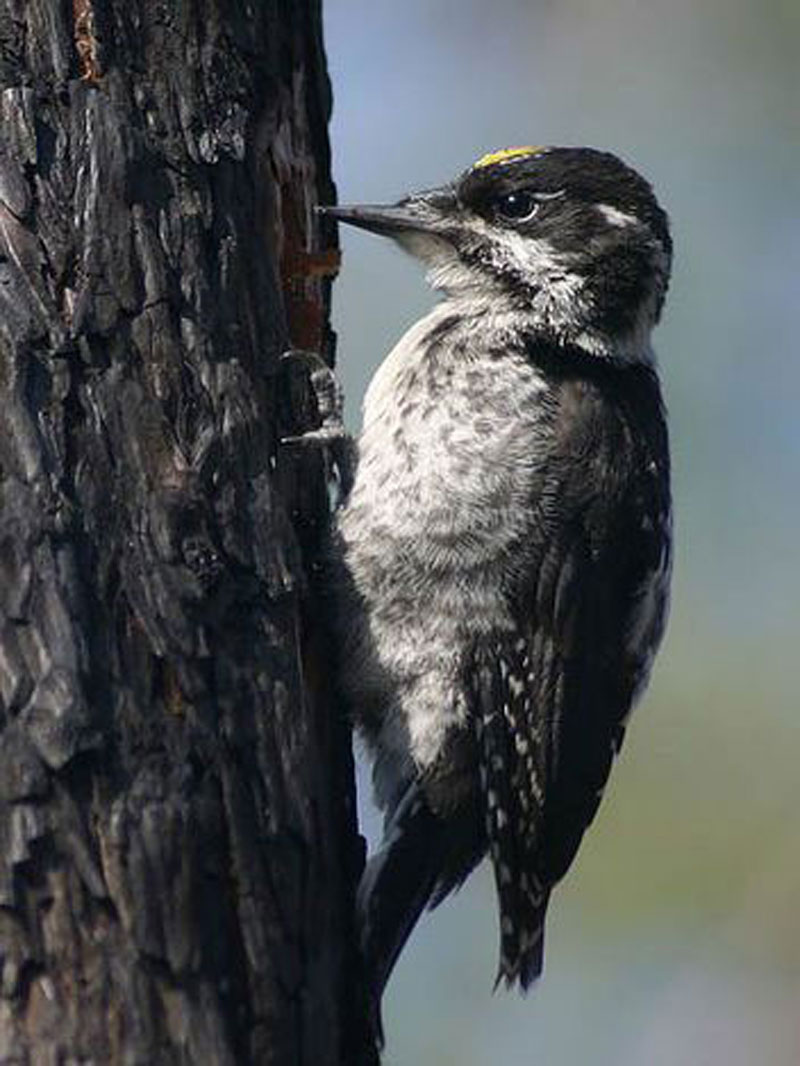
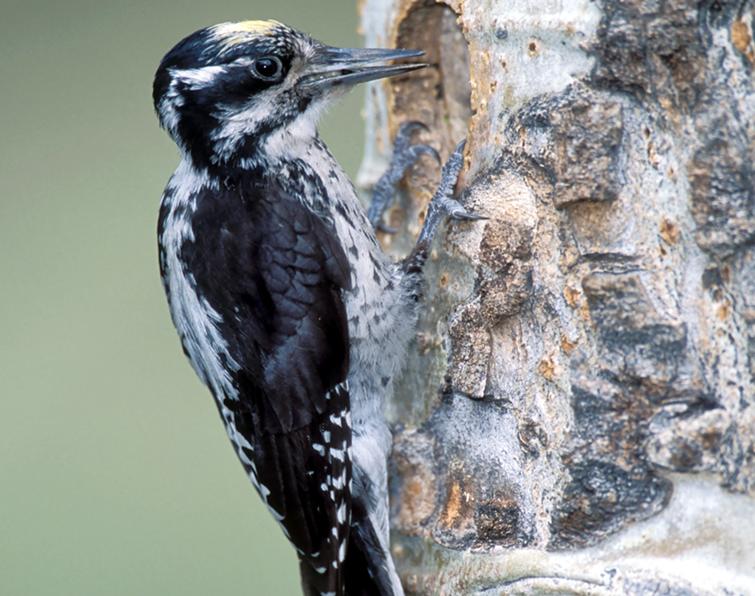
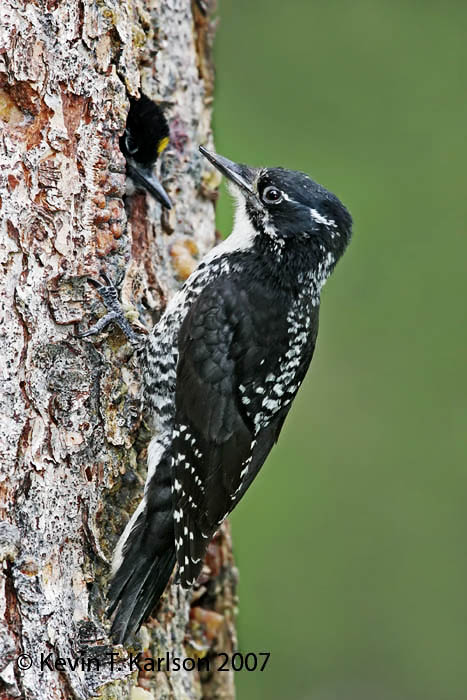
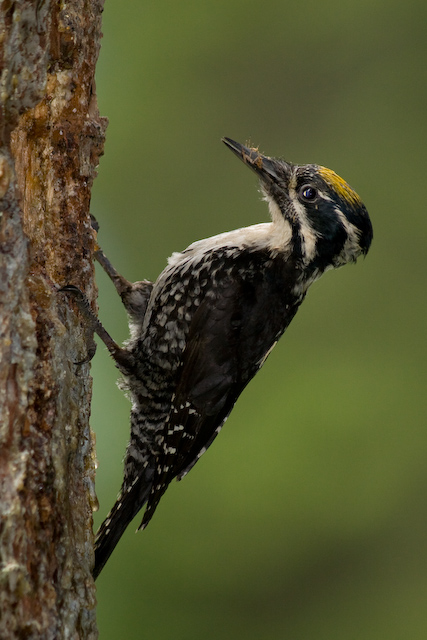
 Animalia Life
Animalia Life